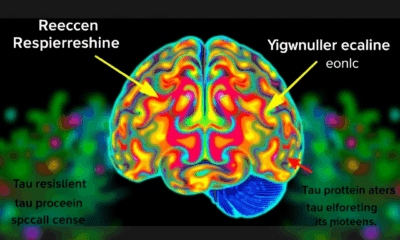While we try to keep things accurate, this content is part of an ongoing experiment and may not always be reliable.
Please double-check important details — we’re not responsible for how the information is used.
Genes
Unveiling the Secrets of Congenital Deafness: New Candidate Genes Revealed
New candidate genes which could be responsible for deafness have been identified.

Biotechnology and Bioengineering
Unlocking the Secrets of Aging: Scientists Discover the Switch that Controls Cellular Renewal
Scientists have discovered that starving and then refeeding worms can reveal surprising secrets about aging. When a specific gene (called TFEB) is missing, these worms don’t bounce back from fasting—they instead enter a state that looks a lot like aging in humans, with signs of stress and cell damage. This research gives scientists a simple but powerful way to study how aging begins—and how it might be stopped. Even more intriguing, the same process might help explain how some cancer cells survive treatment by going into a kind of sleep mode.
Genes
“New Neurons in Old Brains: Groundbreaking Study Confirms Neurogenesis in Adult Human Brain”
Researchers from Sweden have discovered that the human brain continues to grow new cells in the memory region—called the hippocampus—even into old age. Using advanced tools to examine brain samples from people of all ages, the team identified the early-stage cells that eventually become neurons. These findings confirm that our brains remain more adaptable than previously believed, opening the door to potential treatments for memory loss and brain-related disorders.
Alternative Medicine
A Sweet Solution: Benzaldehyde Shown to Halt Therapy-Resistant Pancreatic Cancer
A compound best known for giving almonds and apricots their aroma may be the key to defeating hard-to-kill cancer cells. Japanese researchers found that benzaldehyde can stop the shape-shifting ability of aggressive cancer cells, which lets them dodge treatments and spread. By targeting a specific protein interaction essential for cancer survival—without harming normal cells—benzaldehyde and its derivatives could form the basis of powerful new therapies, especially when combined with existing radiation or targeted treatments.
-

 Detectors3 months ago
Detectors3 months agoA New Horizon for Vision: How Gold Nanoparticles May Restore People’s Sight
-

 Earth & Climate4 months ago
Earth & Climate4 months agoRetiring Abroad Can Be Lonely Business
-

 Cancer4 months ago
Cancer4 months agoRevolutionizing Quantum Communication: Direct Connections Between Multiple Processors
-

 Agriculture and Food4 months ago
Agriculture and Food4 months ago“A Sustainable Solution: Researchers Create Hybrid Cheese with 25% Pea Protein”
-

 Diseases and Conditions4 months ago
Diseases and Conditions4 months agoReducing Falls Among Elderly Women with Polypharmacy through Exercise Intervention
-

 Albert Einstein4 months ago
Albert Einstein4 months agoHarnessing Water Waves: A Breakthrough in Controlling Floating Objects
-

 Chemistry3 months ago
Chemistry3 months ago“Unveiling Hidden Patterns: A New Twist on Interference Phenomena”
-

 Earth & Climate4 months ago
Earth & Climate4 months agoHousehold Electricity Three Times More Expensive Than Upcoming ‘Eco-Friendly’ Aviation E-Fuels, Study Reveals





























